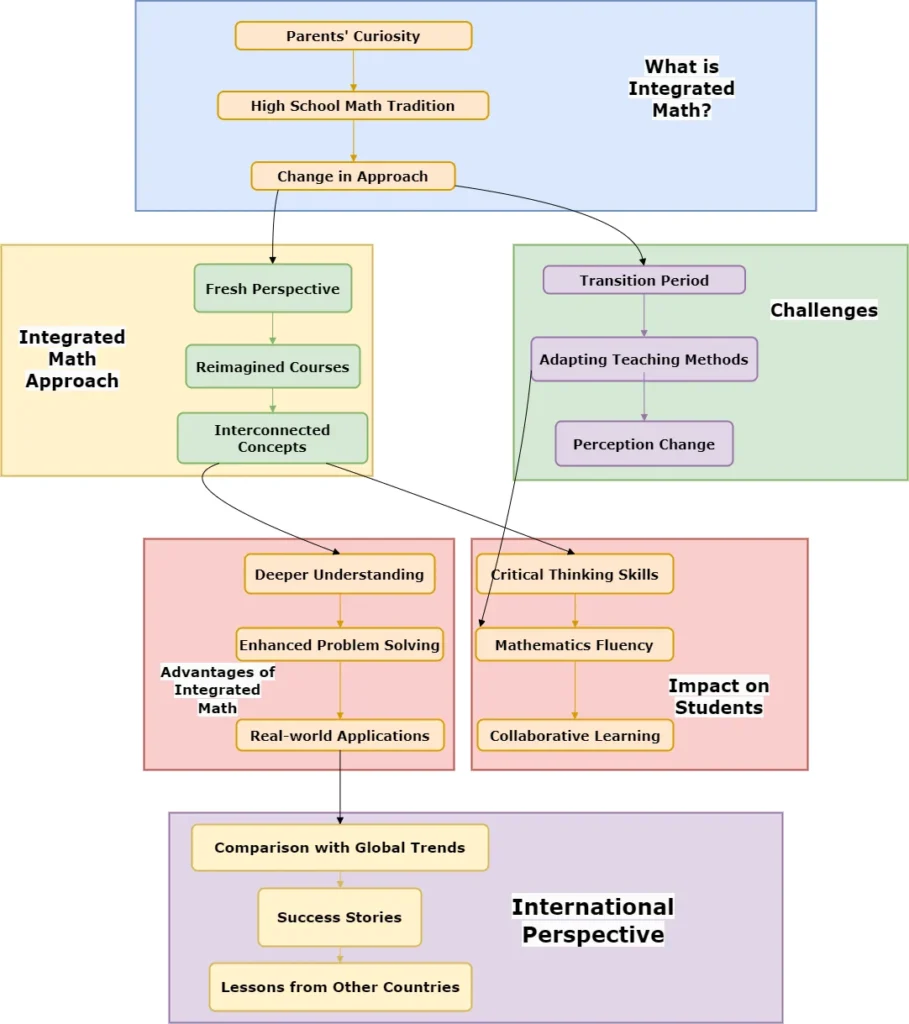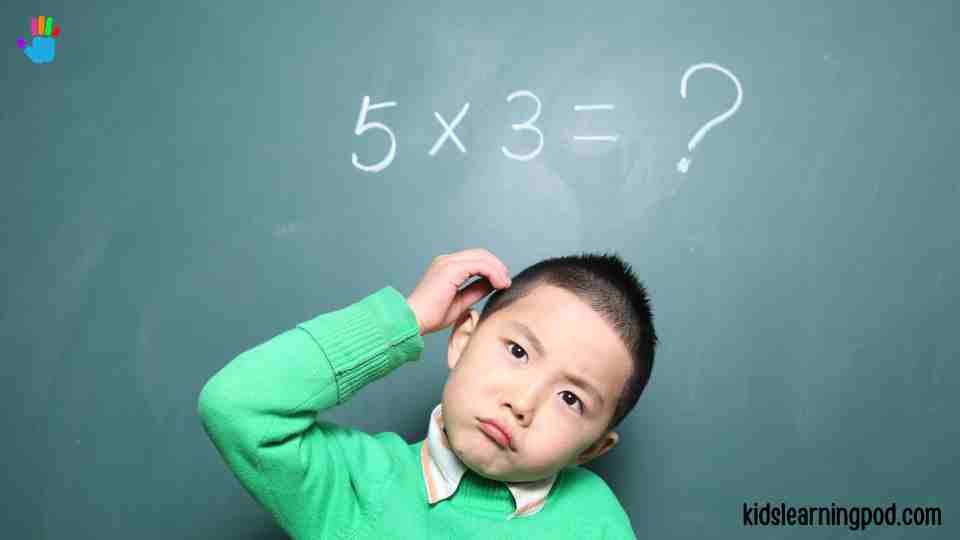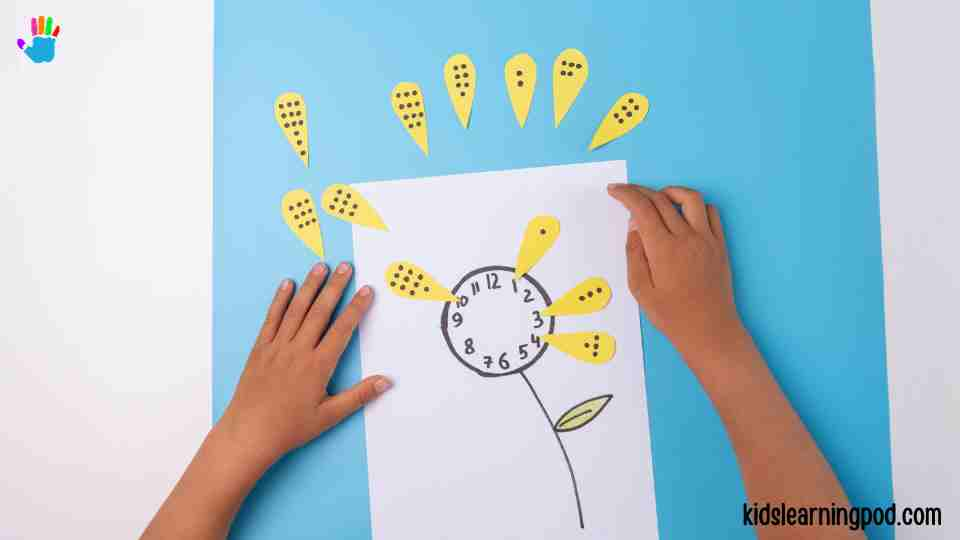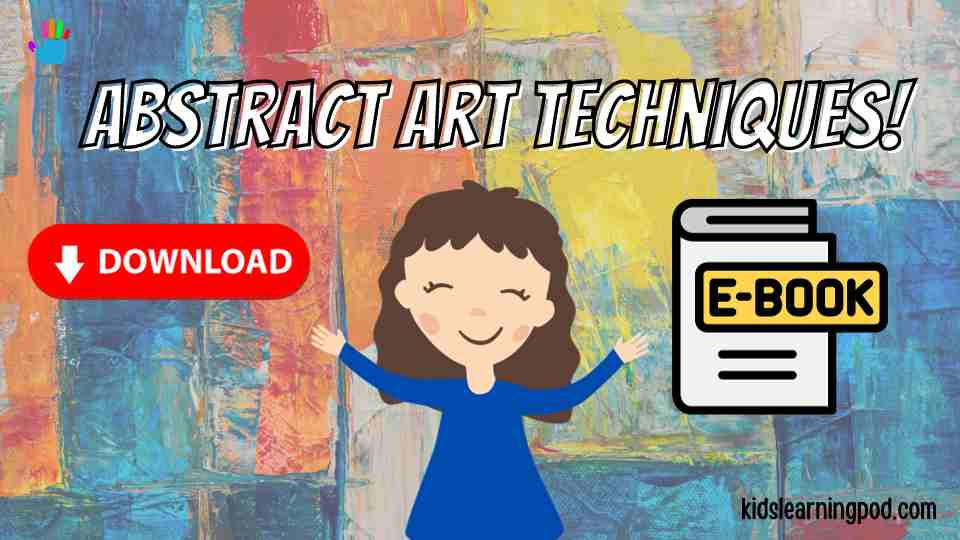Stop wondering about what is integrated math and learn!
Parents who are wondering about “what is integrated math?”, for decades, high school mathematics in the United States followed a predictable path: Algebra 1, Geometry, and Algebra 2, each in its own isolated silo. But times are changing, and a new approach known as Integrated Math is reshaping how we teach and learn these critical subjects. Integrated mathematics takes a fresh perspective, reimagining these courses as Math 1, Math 2, and Math 3. What sets Integrated Math apart is that it weaves together algebraic, geometric, and statistical thinking across all three courses. Instead of isolating these concepts, it interconnects them in a way that encourages students to continually revisit and reinforce their mathematical skills and understanding.
So, what’s the big advantage of this integrated approach? Well, it’s all about building a deeper foundation. After completing three years of Integrated Math, students will have not only mastered the content covered in the traditional three-year pathway but will also possess more robust problem-solving and reasoning skills. This is because Integrated Math delves into the intricate relationships among algebraic, geometric, and statistical concepts.
In the world of Integrated Math, the focus isn’t just on mastering algorithms and formulas; it’s on solving ‘math tasks.’ This means students are actively engaged in real-world problem-solving, making connections between different mathematical concepts, and developing a more holistic understanding of mathematics.
What is Integrated Math in essence?
In essence, Integrated Math is about preparing students for the challenges of today’s world, where mathematical thinking is a vital skill in many aspects of life. So, whether you’re a student or a parent looking to understand the changing landscape of math education, keep an eye on the exciting possibilities that Integrated Math offers. Integrated math, often referred to as integrated mathematics, is an innovative approach to teaching mathematics. It differs from the traditional method of teaching math, which typically segregates subjects like algebra, geometry, and trigonometry into separate courses. Integrated math, on the other hand, combines these topics into a unified curriculum.

Integrated Math vs. Traditional Math: Which Is Better?
If you’ve been curious about the ongoing debate between integrated math and traditional math curricula, recent studies and insights might offer some valuable clarity.
According to an article by Madeline Will on EdWeek.org, students following an integrated math curriculum have shown remarkable performance compared to those following the conventional American math sequence. It’s an intriguing finding that suggests integrated math might indeed have its merits.
Will’s article highlights that not only do students in integrated math programs excel academically, but many countries with superior performance in international assessments also favor an integrated-mathematics approach for secondary education.
Moreover, American teachers and administrators who have made the transition to an integrated-math pathway have reported seeing numerous benefits. This speaks volumes about the positive impact this educational shift can have on students’ learning experiences.
Now, you might be wondering how integrated math works compared to the traditional American approach. To help you gain a better understanding, we’ve prepared an infographic below that compares the classes students take in both systems. It’s an eye-opening way to explore the differences and see why integrated math is gaining traction as a valuable alternative to the traditional approach.
Transitioning to Integrated Math in the Era of Common Core
As schools across the United States adapt to the Common Core State Standards, a shift towards integrated mathematics is gaining momentum. This approach combines algebra, geometry, and statistics, emphasizing connections between these subjects. Students typically take integrated math courses from freshman to junior year, with three levels of complexity.
Integrated math has sporadically appeared since the 1990s but recently gained traction, thanks in part to the Common Core. The Common Core’s flexibility has allowed districts to explore integrated math, with some states like North Carolina, West Virginia, and Utah mandating it for all public high schools. Others, like Arkansas and Florida, have opted for the traditional pathway. Georgia has been using integrated math since 2008, transitioning to a hybrid model recently.
This shift has not been without its challenges, including resource allocation and detractors among math teachers. However, some educators saw it as an opportunity to align with the Common Core and enhance the curriculum. The adoption of integrated math is backed by growing support within the mathematics-education community. A study found that students taught with this approach outperformed those in traditional sequences, indicating the significance of curriculum choices. Integrated math is a recognized approach in many countries with strong math education outcomes, and American educators who’ve adopted it report seeing benefits.
The move towards integrated math reflects the changing landscape of mathematics education in the United States, driven by the need to foster deeper understanding and adapt to evolving standards.

The Fusion of Mathematical Concepts
In integrated math, mathematical concepts aren’t taught in isolation. Instead, students explore how algebraic, geometric, and trigonometric ideas interconnect, creating a more holistic understanding of mathematics. This approach mirrors the real-world application of math, where problems rarely fit neatly into a single mathematical category.
Real-World Applications
One of the defining features of integrated math is its emphasis on real-world applications. Students are encouraged to apply mathematical concepts to solve practical problems, making math relevant and engaging.
How is Integrated Math Taught?
Integrated math isn’t just about what is taught but also how it’s taught. Educators use various strategies to ensure students grasp mathematical concepts deeply and enjoy the learning process.
1. Introducing Games and Technology
Technology has revolutionized education, and integrated math is no exception. By incorporating games and technology into lessons, teachers can engage students and make complex concepts more accessible.
2. Hands-On Activities
Hands-on activities, such as using manipulatives like blocks and counters, help students visualize and understand mathematical concepts. This tactile approach fosters a deeper understanding of math.
3. Problem-Solving Opportunities
Problem-solving is a crucial skill, and integrated math promotes it through projects, puzzles, and mazes. These activities challenge students to apply their knowledge to real-world situations.
4. Peer Tutoring
Peer tutoring allows students to help their peers learn math concepts they’ve mastered. It not only reinforces their own understanding but also promotes teamwork and collaboration.
5. Making Learning Fun
Collaborative learning, incorporating books, songs, and rhymes, can turn math lessons into enjoyable experiences. When students have fun while learning, they are more likely to retain information.
6. Focus on Critical Thinking
Critical thinking is encouraged through open-ended questions that require higher-level thinking skills. Students are asked to explain their reasoning through drawings, charts, and graphs.
7. Practice Makes Perfect
Positive reinforcement and praise motivate students to keep learning and mastering new concepts. Providing opportunities for ample practice ensures retention and skill development.
8. Variety of Activities
Integrated math instruction thrives on variety. Teachers use activities that offer different perspectives on the same topics, catering to diverse learning styles.
9. Data Representation Techniques
Exploring multiple representations of data helps students make connections between numbers, equations, diagrams, and graphs, enhancing their mathematical fluency.
10. Real-World Examples
Connecting math concepts to real-world applications, like counting money and baking recipes, demonstrates the practicality of math and its relevance in daily life.
11. Differentiation
Teachers tailor their approach to meet each student’s individual needs, ensuring that every learner has the opportunity to succeed in integrated math.

Other Important Aspects of Integrated Math
Integrated math extends beyond the classroom. Here are some additional aspects that enrich the learning experience:
1. Practicing with Real-Life Problems
Solving real-life problems provides a meaningful context for learning mathematics, making it more relatable and applicable.
2. Understanding Everyday Applications
Studying how mathematics applies to everyday life can increase students’ appreciation for the subject, showing its relevance beyond school.
3. Celebrating Successes
Acknowledging and celebrating students’ milestones and achievements fosters a positive attitude towards math and boosts confidence.
4. Incorporating Current Events
Integrating current events into lessons demonstrates how math is used in the real world, connecting classroom learning to global happenings.
5. Using Manipulatives
The use of manipulatives helps children grasp mathematical concepts better, as they can physically interact with abstract ideas.
6. Collaborative Problem-Solving
Getting students to work together to solve problems or use trial and error as a problem-solving strategy promotes teamwork and resilience.
7. Visual Cues
Visual aids such as diagrams and models provide valuable support in understanding complex math problems, making abstract concepts more concrete.
8. Open Dialogue
Encouraging open dialogue between students and teachers about challenging concepts fosters a supportive learning environment.
9. Experimentation with Tools
Allowing students to experiment with different tools like calculators and spreadsheets when solving complex problems enhances their problem-solving skills.
10. Creative Introductions
Introducing math topics in creative and engaging ways allows students to experience the fun side of mathematics, making it less intimidating.

FAQs (Frequently Asked Questions)
Q: Is integrated math suitable for all grade levels? A: Yes, integrated math can be adapted for various grade levels, ensuring it aligns with age-appropriate learning objectives.
Q: What are the benefits of integrated math over traditional math education? A: Integrated math promotes a deeper understanding of mathematical concepts, their real-world applications, and critical thinking skills.
Q: How can parents support their children in learning integrated math? A: Parents can engage with their children by practicing math together, providing resources, and encouraging a positive attitude towards math.
Q: Are there resources available for educators to implement integrated math effectively? A: Yes, there are many curriculum guides, textbooks, and online resources tailored to integrated math instruction.
Q: Can integrated math prepare students for standardized tests? A: Yes, integrated math equips students with a strong foundation in mathematics, which can help them perform well on standardized tests.
Q: What careers benefit from a strong foundation in integrated math? A: A wide range of careers, including engineering, science, finance, and technology, benefit from a strong mathematical background.

Conclusion
In conclusion, integrated math offers a dynamic approach to teaching mathematics, fostering a deeper understanding of concepts, real-world applications, and critical thinking skills. Whether you’re a student embarking on your mathematical journey or a parent seeking to support your child’s education, understanding integrated math can open doors to exciting possibilities in the world of mathematics. Embrace the integrated approach and explore the limitless potential of math in our daily lives. What is Integrated math? It’s a gateway to mathematical excellence and real-world problem-solving.
FAQs
Certainly, here are the answers to your FAQs:
What is Integrated Math?
Integrated Math is an approach to mathematics education that combines various mathematical topics such as algebra, geometry, and statistics, emphasizing the interconnectedness of these subjects. It moves away from teaching these topics separately, encouraging students to see how they relate to one another.
What type of math is integrated?
Integrated Math encompasses a blend of mathematical topics, including algebra, geometry, probability, and statistics. These subjects are interwoven throughout the curriculum to help students understand the connections between them.
What is Integrated Math 1?
Integrated Math 1 is typically the first course in a sequence of integrated math courses. It covers fundamental mathematical concepts and lays the foundation for more advanced integrated math courses. Students often take this course during their freshman year of high school.
Is integrated math trigonometry?
While trigonometry may be included in integrated math courses, integrated math covers a broader spectrum of mathematical topics, including algebra, geometry, probability, and statistics. Trigonometry is just one component of the integrated curriculum, which aims to provide students with a comprehensive understanding of mathematics.





